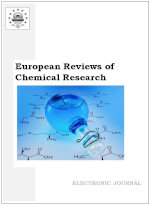3 September 16, 2016
Articles and Statements
1. Mohammad Asif
A Review on a Highly Important Hetrocycle Quinazolinone Compounds and their Diverse Biological Activities
European Reviews of Chemical Research, 2016, Vol.(9), Is. 3, pp. 70-87.
Number of views: 1959 Download in PDF
2. P. Thriveni, K.P.V. Subba Rao, M. Hari Krishna, C. ViswanathaEuropean Reviews of Chemical Research, 2016, Vol.(9), Is. 3, pp. 70-87.
Abstract:
Quinazolinone and their derivatives have been studied extensively for various biological activities such as anti-inflammatory, antimicrobial, anticancer, anticonvulsant and anti-HIV activity etc. The purpose of this review was to collate literature work reported by researchers on quinazoline for their various pharmacological activities. Quinazolinone derivatives are one of the most active classes of compounds possessing a wide spectrum of biological activity. Recently several scientists have been reported that introduction of various heterocyclic moieties at quinazolinone nucleus modulate the activity. Various derivatives of quinazolinone have been synthesized and evaluated for their biological activities. This review might be helpful in the development of these novel lead molecules to potential drug candidates for future prospect.
Quinazolinone and their derivatives have been studied extensively for various biological activities such as anti-inflammatory, antimicrobial, anticancer, anticonvulsant and anti-HIV activity etc. The purpose of this review was to collate literature work reported by researchers on quinazoline for their various pharmacological activities. Quinazolinone derivatives are one of the most active classes of compounds possessing a wide spectrum of biological activity. Recently several scientists have been reported that introduction of various heterocyclic moieties at quinazolinone nucleus modulate the activity. Various derivatives of quinazolinone have been synthesized and evaluated for their biological activities. This review might be helpful in the development of these novel lead molecules to potential drug candidates for future prospect.
Number of views: 1959 Download in PDF
Boric Acid Catalyzed Synthesis of 2-substituted Benzoxazoles in Aqueous Media
European Reviews of Chemical Research, 2016, Vol.(9), Is. 3, pp. 88-93.
Number of views: 1940 Download in PDF
3. Victoria M. Yurk, Larisa N. Мaskaeva, Vyacheslav F. Markov, Victoria S. UstugovaEuropean Reviews of Chemical Research, 2016, Vol.(9), Is. 3, pp. 88-93.
Abstract:
We report the synthesis of benzoxazoles using boric acid as catalyst in aqueous media. Synthesis of 2-substituted benzoxazoles derivatives from 2-amino phenol and a variety of aldehydes were developed under mild reaction conditions. The selection and use of water is emphasized as regards methods to minimize environmental impact. On completion of reaction the products were characterized by IR, NMR and Mass Spectra. These methods are more convenient and reactions can be carried out in higher yield.
We report the synthesis of benzoxazoles using boric acid as catalyst in aqueous media. Synthesis of 2-substituted benzoxazoles derivatives from 2-amino phenol and a variety of aldehydes were developed under mild reaction conditions. The selection and use of water is emphasized as regards methods to minimize environmental impact. On completion of reaction the products were characterized by IR, NMR and Mass Spectra. These methods are more convenient and reactions can be carried out in higher yield.
Number of views: 1940 Download in PDF
Thermal Activation of Iodine-Containing PbSe thin Films
European Reviews of Chemical Research, 2016, Vol.(9), Is. 3, pp. 94-98.
Number of views: 1973 Download in PDF
4. European Reviews of Chemical Research, 2016, Vol.(9), Is. 3, pp. 94-98.
Abstract:
Influence of iodine addition on elemental composition, structure and surface morphology on lead selenide thin films prepared by chemical bath deposition method was studied by methods of X-ray diffraction analysis and scanning electron microscopy with elemental energy-dispersive analysis. Content of iodine in thin films raised to 4.25 at.% with increasing concentration of ammonium iodide in bath solution. Influence of anneal on structure and crystallite size of lead selenide thin films was found.
Influence of iodine addition on elemental composition, structure and surface morphology on lead selenide thin films prepared by chemical bath deposition method was studied by methods of X-ray diffraction analysis and scanning electron microscopy with elemental energy-dispersive analysis. Content of iodine in thin films raised to 4.25 at.% with increasing concentration of ammonium iodide in bath solution. Influence of anneal on structure and crystallite size of lead selenide thin films was found.
Number of views: 1973 Download in PDF








